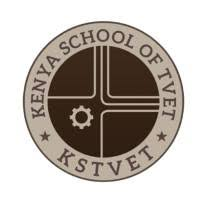Electrical and Electronic Principles and Technology
2. DC and AC Supplies
2.1. DC Supplies
Introduction
In electrical engineering, power supplies are essential for providing the energy required to operate various devices and circuits. A DC (Direct Current) supply delivers a constant voltage or current in a single direction, making it ideal for powering most electronic components and systems. Unlike AC (Alternating Current), which periodically reverses direction, DC flows uniformly, offering stable and predictable performance. DC supplies are commonly used in batteries, electronic devices, automotive systems, and renewable energy technologies such as solar power.
Understanding how DC supplies work, the types available, and their characteristics is fundamental for anyone studying electricity or working with electronic systems.
1. Definition
DC Supply (Direct Current Supply) provides a constant voltage or current in one direction.
2. Types of DC Sources
| Type | Description | Example |
|---|---|---|
| Battery | Electrochemical source | AA battery, car battery |
| DC Power Supply Unit | Converts AC to DC using rectifiers | Lab power supply |
| Solar Cell | Converts sunlight into DC electricity | Solar panels |
| DC Generator | Converts mechanical energy into DC | Dynamo |
3. Characteristics of DC Supply
-
Voltage remains constant over time (ideal case).
-
Current flows in only one direction.
-
Represented as a straight line in a V vs. t graph.
4. AC vs DC Comparison
| Feature | DC | AC |
|---|---|---|
| Flow Direction | One direction (unidirectional) | Alternating direction |
| Voltage Level | Constant | Varies sinusoidally |
| Source Examples | Battery, solar cell | Mains electricity |
| Transmission Losses | Higher | Lower (can use transformers) |
5. Basic DC Circuit Components
-
Resistors: Limit current.
-
Capacitors: Store charge temporarily.
-
Inductors: Resist change in current (less common in pure DC).
-
Switches: Control circuit connection.
-
Diodes: Allow current in one direction only.
6. Applications of DC Supply
-
Electronic circuits (Arduino, Raspberry Pi)
-
Portable devices (phones, laptops)
-
Automotive systems (DC motors)
-
Solar power systems
7. Formulas (DC Circuits)
-
Ohm's Law:
(Voltage = Current × Resistance) -
Power:
-
Energy:
(Energy = Power × Time)
8. Regulated vs Unregulated DC Supply
| Type | Description |
|---|---|
| Unregulated | Output voltage varies with load |
| Regulated | Constant output voltage, regardless of load |
